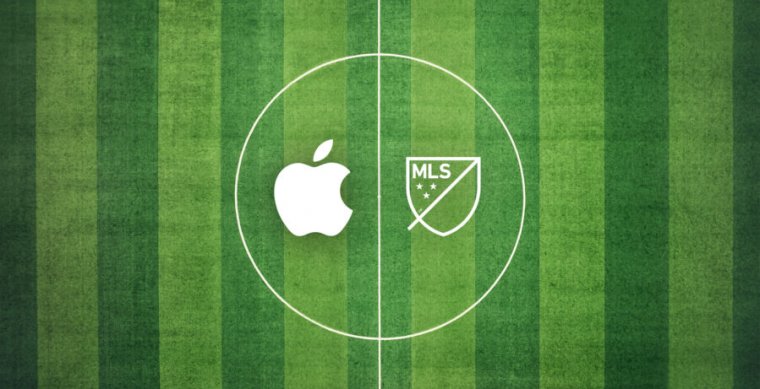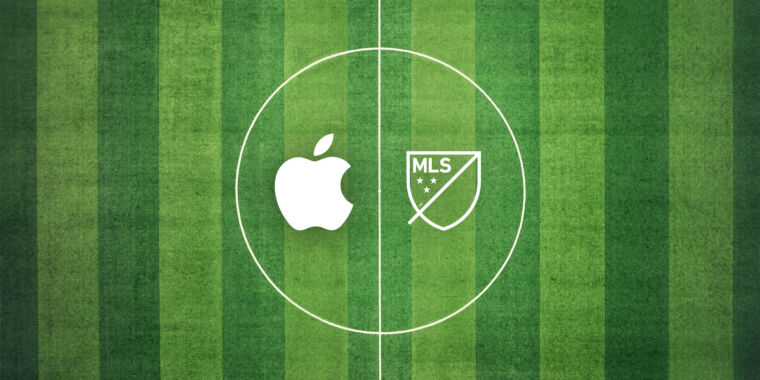
Today, Apple and Major League Soccer (MLS) announced that the Apple TV app will offer streaming video of every MLS match for the next 10 years.
Apple claims that viewers “around the world” can “watch all MLS, Leagues Cup, and select MLS NEXT Pro and MLS NEXT matches in one place—without any local broadcast blackouts or the need for a traditional pay TV bundle.”
This will all be part of a “new MLS streaming service” that will become available in early 2023, with matches offered up through 2032. It will offer both live and on-demand video.
A blog post on Apple’s newsroom site seems to suggest that while the service will be exclusive to the Apple TV app, it will be billed separately from Apple’s catch-all Apple TV+ streaming service. That said, a limited number of MLS and League Cup matches will be available for free to Apple TV+ subscribers.
The post also notes that purchasers of MLS full-season ticket packages will get free access to the entire MLS streaming service.
When you tune in to the streams, you’ll have the choice between English or Spanish announcers for all matches—and there will be a French option for all matches that include Canadian teams, too.
Neither Apple nor MLS have announced a more specific launch date for the service, and the pricing is still a mystery.
The Apple TV app is obviously available on Apple devices like the Mac, iPhone, iPad, and Apple TV. But it has also made its way to other hardware, including PlayStation, Xbox, Chromecast, Amazon Fire TV, Roku, and several major smart TV brands. This is not Apple’s first foray into sports streaming. It’s been part of the Apple TV strategy in some way or another for a while, but the company escalated its plans with regular, Friday night Major League Baseball (MLB) streams earlier this year.
Why this makes ESPN and regional sports networks nervous
Major League Soccer dwells just outside the rarified popular sports neighborhood occupied by the NFL, MLB, NBA, NHL, and college football and basketball. But even with MLS’s relative lack of popularity compared to the other leagues, this announcement from Apple is a Very Big Deal.
Live sports is by far the top reason millions of people have yet to cut the cord, severing their ties to cable companies and satellite TV providers. That’s merely because the easiest way to follow your hometown team—outside of the NFL, which has all of its games free to air in local markets—is to subscribe to your local cable company or a satellite provider. Those are the folks who carry the regional sports network that has the rights to broadcast your local teams. For a Chicagoan who wants to catch all of the Bulls, Blackhawks, Cubs, White Sox, Fire, and Red Stars matches, their only choices to follow the action are Marquee Sports Network and NBC Sports Chicago, both of which require a cable or satellite TV subscription.
For the first time, an MLS fan can watch all of their favorite team’s matches without a cable subscription. That’s huge because this is the first time this has been the case for any major American sports league. Sure, MLB and the NBA offer their own over-the-top streaming services, but there are significant restrictions. You can’t watch your local team on NBA League Pass; you need a cable subscription for that. You can’t watch national broadcasts on NBA League Pass; you need a cable subscription for the games that aren’t broadcast over the air. And so on.
Apple TV changes that model with today’s announcement. If you’re a die-hard Columbus fan and you want to watch your beloved Crew anywhere, anytime, you have a new option that doesn’t involve Comcast or DirecTV. And if you’ve been holding on to cable just so you can watch the Crew, this is going to be a lot cheaper.
Apple and MLS have done something notable here. With the NFL currently negotiating with a handful of streaming services for its out-of-market Sunday Ticket service and the NCAA’s Big Ten Conference in the process of selling off its next media rights package, the next big deal may end up cutting out cable altogether. According to John Ourand at Sports Business Journal, Apple is paying somewhere in the neighborhood of $2.5 billion over the 10 years of this agreement. That’s chump change for Apple… and Amazon… and Google.
Today’s announcement heralds the beginning of the end of the traditional way sports in the US are packaged for broadcast. When live, out-of-market sports are no longer the solely to be found on cable, cord-cutting is going to accelerate, much to the dismay of the regional sports networks—and even ESPN.








